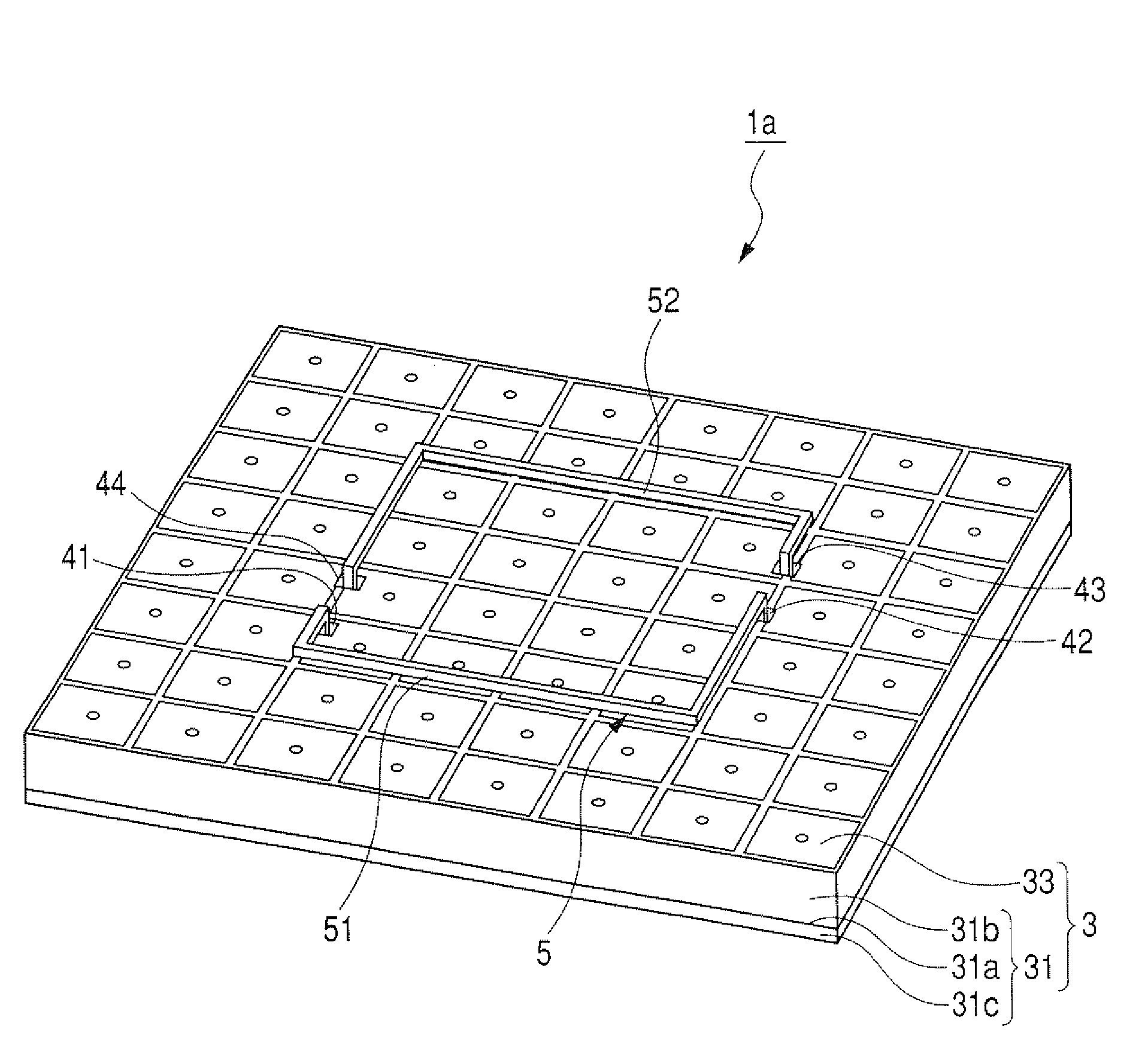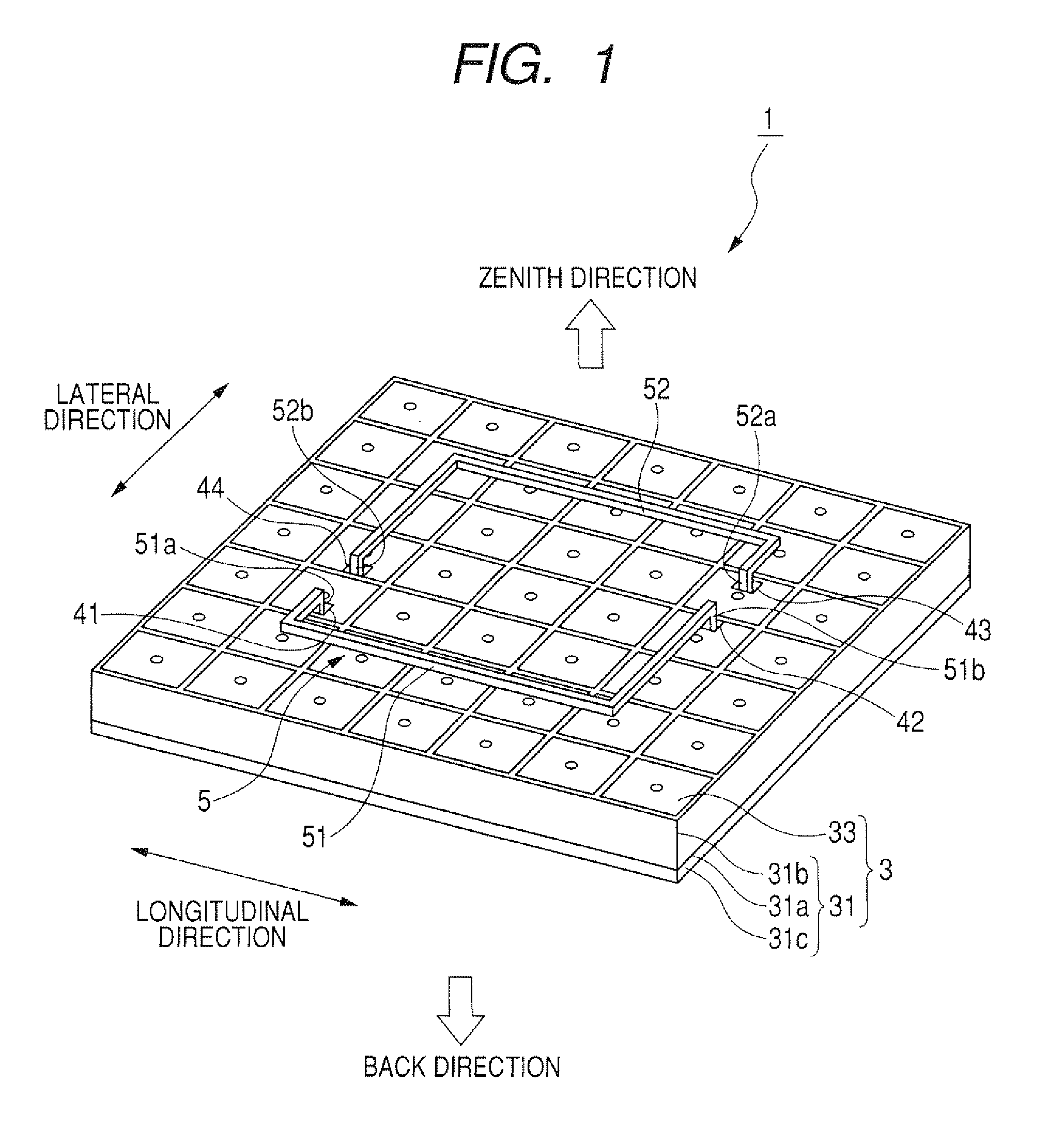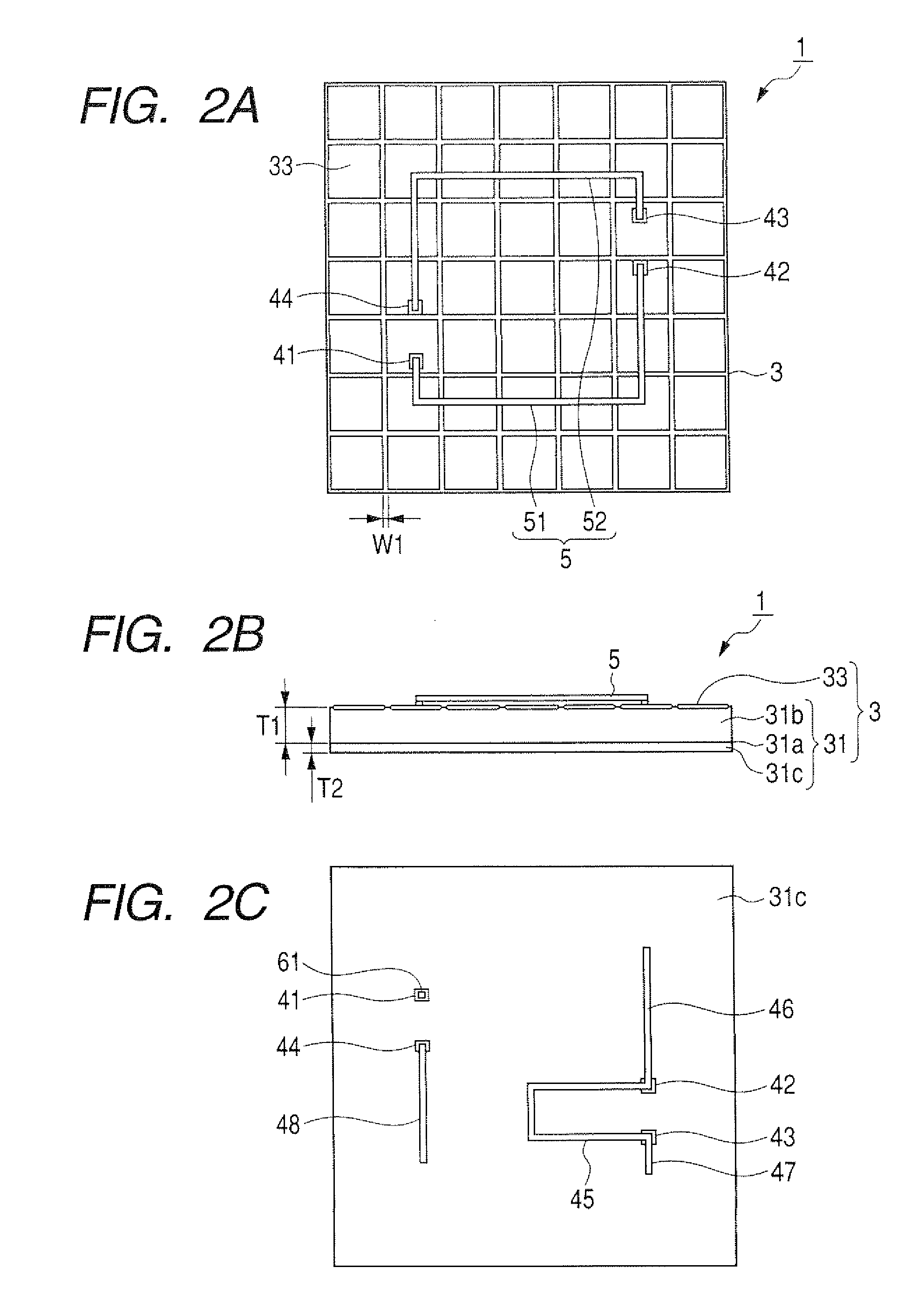Antenna apparatus for radio communication
a technology of antenna apparatus and antenna, applied in the field of antenna apparatus, can solve the problem that the patch antenna cannot sufficiently lower the intensity of electric waves radiated toward the back side of the antenna, and achieve the effect of lowering the intensity of electric waves radiated
- Summary
- Abstract
- Description
- Claims
- Application Information
AI Technical Summary
Benefits of technology
Problems solved by technology
Method used
Image
Examples
embodiment 1
[0050]FIG. 1 is a perspective side view of an antenna apparatus according to the first embodiment. FIG. 2A is a front view of the antenna apparatus shown in FIG. 1, FIG. 2B is a side view of the antenna apparatus shown in FIG. 1, and FIG. 2C is a back view of the antenna apparatus shown in FIG. 1.
[0051]As shown in FIG. 1 and FIG. 2A, an antenna apparatus 1 has a ground plane 3 formed in a rectangular parallelepiped and a radiation element 5 radiating electromagnetic waves. As described later in detail, the ground plane 3 has an electromagnetic band gap surface (or an electromagnetic band gap plate) on the front side of the ground plane 3. The band gap surface is conductive and has a high impedance for an alternating current of a specific frequency band to substantially prevent propagation of electromagnetic waves set within the specific frequency band.
[0052]The radiation element 5 has a first linear antenna 51 and a second linear antenna 52 paired with each other. The antennas 51 an...
embodiment 2
[0093]FIG. 7 is a perspective side view of an antenna apparatus according to the second embodiment. FIG. 5A is a front view of the antenna apparatus shown in FIG. 7. FIG. 5B is a side view of the antenna apparatus shown in FIG. 7. FIG. 9 is a back view of the antenna apparatus shown in FIG. 7.
[0094]As shown in FIG. 7, FIG. 8A, FIG. 8B, and FIG. 9, an antenna apparatus 10 has a ground plane 13 formed in a rectangular parallelepiped and a radiation section 15 radiating and receiving electromagnetic waves. The ground plane 13 is partitioned into a first ground plane portion 13a disposed in the center of the ground plane 13, a second ground plane portion 13b disposed on one side (left side in FIG. 8A) of the portion 13a, and a third ground plane portion 13c disposed on the periphery of the ground plane 13 so as to surround the portions 13a and 13b. The plane portions 13a to 13c are spaced from one another through dielectric (or insulating) parts of the ground plane 13. As described late...
embodiment 3
[0117]FIG. 14 is a front view of an antenna apparatus according to the third embodiment, while FIG. 15 is a sectional view taken substantially along line A-A of FIG. 14. FIG. 16 is a back view of the antenna apparatus shown in FIG. 14.
[0118]As shown in FIG. 14, FIG. 15 and FIG. 16, an antenna apparatus 100 has a ground plane 103 formed in a rectangular parallelepiped, a radiation element 105 radiating and receiving electromagnetic waves, and an antenna case 101. The case 101 accommodates the ground plane 103 and the radiation element 105 therein so as to surround four side surfaces and a bottom surface of the ground plane 103 and to expose a front surface of the ground plane 103 from an opening of the case 101. The case 101 is made of metal so as to prevent electromagnetic waves from being radiated from the element 105 toward the back side of the apparatus 100 while going around the side surfaces of the ground plane 103. The radiation element 105 has the linear antennas 51 and 52 di...
PUM
 Login to View More
Login to View More Abstract
Description
Claims
Application Information
 Login to View More
Login to View More - R&D
- Intellectual Property
- Life Sciences
- Materials
- Tech Scout
- Unparalleled Data Quality
- Higher Quality Content
- 60% Fewer Hallucinations
Browse by: Latest US Patents, China's latest patents, Technical Efficacy Thesaurus, Application Domain, Technology Topic, Popular Technical Reports.
© 2025 PatSnap. All rights reserved.Legal|Privacy policy|Modern Slavery Act Transparency Statement|Sitemap|About US| Contact US: help@patsnap.com



